Following the publication of Formula 1’s sporting, technical and financial regulations during a joint FIA/Liberty Media press conference on Thursday in Austin, two further components of the sport’s 2021 transition remain outstanding.
These are: Finalising the commercial covenants – to wit, the teams’ shares of F1 annual revenue ‘pot’; and agreeing an equitable, robust governance process, one that befits motorsport’s premier category.“The money distribution: it’s more fair than it was before,” opined Franz Tost, team principal of Toro Rosso, the following day when asked about the commercial offers received by the teams a fortnight ago. Taken in conjunction with the financial regulations, these are designed to level the economic playing field, although it will take at least two years before the full effects are felt.
Nailing down the commercial agreements is a straightforward bargaining process based on forecast income and value perceptions. And, while some to-ing and fro-ing is expected, the bottom line is that Liberty can only push so far, where after the commercial rights holder teeters into the red, which would be absolutely disastrous for the listed NASDAQ entity. The boundaries are therefore defined – so far and no further.
But Formula 1’s governance – simply put, the way the rules are written – is a thornier topic. On one hand, over-regulation by the FIA, the sport’s administrative and governing body, could lead participants to race elsewhere, either in protest or because that F1 no longer serves their objectives. On the other hand, granting Liberty carte blanche may well result in over-concentration on exploiting ‘the show’ to the detriment of sporting principles.
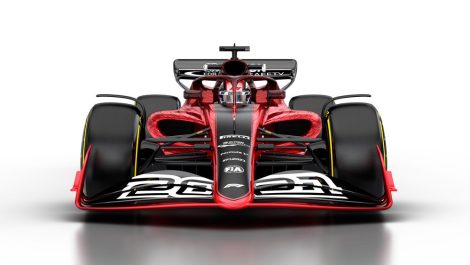
While there can be no perfect governance procedure in an activity as inherently complex as F1, attaining the optimum process, one that ticks most boxes for the three primary stakeholder groups, is a question of achieving a balance between their disparate priorities while placing the welfare and growth of the sport at the centre.
Apart from the FIA, Liberty (F1) and the 10 current teams – who, just to further complicate matters, all operate to vastly differing business models, and draw on distinctly different budgets – there are additional players to consider: those who are fundamental to the continued functioning of the sport. Namely: technical partners, tyre/engine suppliers, sponsors and, last but not least, the race promoters and broadcasters who ultimately pay the bills.
Advert | Become a RaceFans supporter and
F1’s current governance process, which has been in place since 2013, is arguably the worst in the history of the sport. Introduced by Liberty’s predecessor, CVC Capital Partners, as a sop to the major teams in return for their eight-year commitments to F1 ahead of a planned (but ultimately aborted) listing of F1’s commercial rights, it has proven to be utterly dysfunctional.
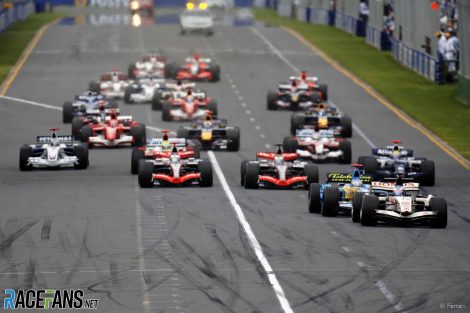
The second-worst system prevailed from 1998 to 2007 and, in the absence of an agreed alternative, was extended to the end of 2009. It granted the FIA excessive powers in the name of ‘safety’. A prime example is the expedited 2006 introduction of V8 engines after the governing body, then in dispute with motor manufacturers, decreed that V10s were too powerful – and thus ‘unsafe’ – and ordered they be scrapped.
Another aberration was the introduction of grooved tyres in 1998 on the basis that cornering speeds were too high. Under the clause, virtually any rules change could be introduced at short notice on the basis of safety.
That changed with the 2010-12 Concorde Agreement, which stipulated that the ‘safety card’ could only be used where there was a demonstrable issue. This made for a relatively stable period, albeit only for three years, after which CVC’s greed came into play to bring us to the present.
It is a truism of Formula 1 is that even the best set of regulations – sporting and/or technical – cannot fix a broken governance process, whereas a merely average regulatory system can readily fix even the worst regulations. Hence it is crucial that the 2021-25 governance process is absolutely fit for purpose, for so sweeping are the changes to the technical regulations that unintended consequences are likely to arise.
A robust governance system without roadblocks of the type currently in place will enable any clarifications or amendments to be introduced with minimal delays and a reduction in the trifling (and stifling) horseplay that has epitomised the present process.
“[We need] to confirm all details of the governance, because in order to make changes as we develop the cars and as we face some unknowns or some loopholes, we need to see how we can fix what is missing from the regulations,” said McLaren Racing CEO Zak Brown during Friday’s FIA press conference in Austin.
Advert | Become a RaceFans supporter and
Given that the financial regulations (enforcing the budget cap) are entirely new, there are bound to be hiccups and teething issues with regulations designed to be all things to all teams. The need for unanimity prior to an early cut-off date would kill off any chance of meaningful introduction and successful implementation of the regulations.
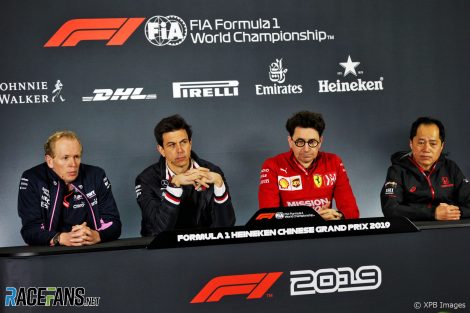
“I think what will be important is the process of discussions, the process of [regulations] modifications – which means [governance] as well – we need to put in place. That will be key from now to the start of 2021 and the earlier we do that the better it will be,” Ferrari team boss Mattia Binotto added during the conference.
His words were echoed by Cyril Abiteboul, managing director of Renault F1, who added the sport must “confirm all details of the governance, because in order to make changes as we develop the cars and as we face some unknowns or some loopholes, we need to see how we can fix what is missing from the regulations.”
So where does F1 stand in this regard at the moment? An outline governance process was presented to the teams in June. Little or nothing of substance has changed in the interim, mainly because the FIA and Liberty believe it ticks all their boxes while being all-inclusive rather than excluding half the teams.
That said, a worrying aspect is that ‘external players’ – promoter, broadcast and technical/commercial partner delegates – are now excluded from the reconstituted Formula 1 Commission as proposed. However, a specific process has been devised for the power unit regulations, while a number of ‘working groups’ will be established to for promoters and broadcasters.
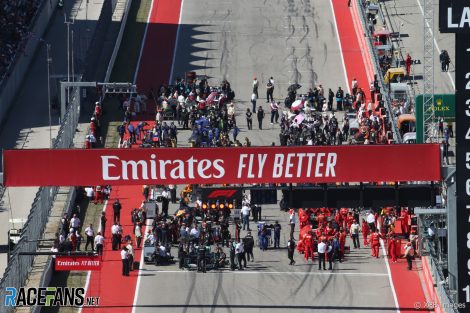
- Simplified structure with only one level below the World Motor Sport Council (the current structure has two lower tiers: the (much-derided) Strategy Group and full, 24-member, F1 Commission)
- Number of representatives within the F1 Commission reduced from 24 to 12 members, namely the teams plus FIA/Liberty representation, with each group having 10 votes
- Fairer representation of all teams within the F1 Commission – all teams to hold full votes, rather than half the grid being members of the Strategy Group, which is currently the initial legislative body
- The influence of the FIA, the F1 CRH and teams in the decision-making process is secured via the treble voting-block system (above), with (the four) power unit suppliers having one vote each where on relevant votes
- Ensure a certain degree of stability in key regulations of the championship via a restructured voting process
- Maintain the FIA discretionary power on safety – self-explanatory, albeit may only be applied in instances of bona fide safety issues after consultation with relevant bodies.
In order to achieve the stated objectives, the Formula 1 Commission will be totally revamped to prevent the gridlock of the recent past – where previously a simple majority was required for motions tabled before 30 April for the following season and unanimity thereafter, an additional category will apply from 2021: super majority.
Go ad-free for just £1 per month
>> Find out more and sign up
In addition, four Advisory Committees – sporting, technical, financial and power unit – will be established; however, these will hold consultative and advisory status only, with no executive powers conferred upon them as was the case with the technical/sporting working groups of the past.

- Until the end of April for the following season – simple majority
- After April until end of December of the preceding year – super majority
- ‘In-season’, namely 1 January to end-December of the corresponding year – unanimity
However, where the financial regulations are affected, different timeframes will apply:
- Until the end of September for the following season – simple majority
- After September until end-December for the following season – super majority
- ‘In-season’, namely 1 January to end-December of the corresponding year – unanimity
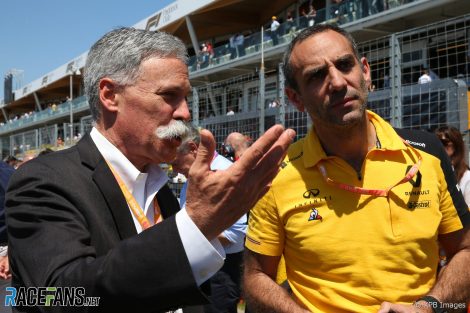
- FIA – 10 votes
- Liberty – 10 votes
- Teams – 10 votes, cast individually
- Simple majority – 25 votes
- Super majority – 28 votes
Thus, using the example (above) of the ‘mini race’ qualifying format, the motion would have been carried as only two teams voted against the change.
A ‘stability period clause’ guarantees that the DNA of F1 – essentially open-wheel, single-seater race cars; designed as manufactured through use of certain specified components of the cars as outlined in the technical regulations – will be respected for a minimum of five years, with the same timeframe applying to the power unit regulations, save that these are subject to on-going discussions with power unit suppliers.
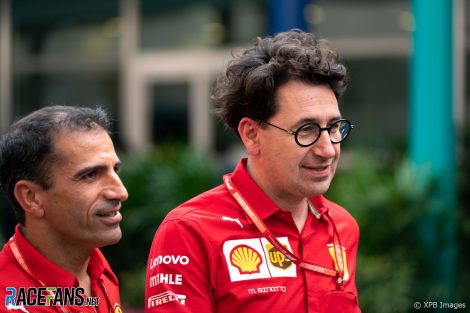
Further, the protection right will apply only to changes to the power unit regulations, any impact on the DNA of F1 and the financial regulations, while the traditional values of the championship and Ferrari’s legitimate interests would need to be affected adversely for any to be heard.
What happens next? RaceFans understands that lawyers are shuttling proposals and counter proposals back and forth, but sources are confident that the governance process will fly largely as proposed. Indeed, some speak (somewhat optimistically) of agreement before testing starts next year. Certainly, it would have to be in place for 2021 in April next year, or it will be too late for immediate changes.
Is the proposed governance structure perfect? No – but, as outlined, that is a utopian ideal in F1. It is, though, a vast improvement on the current process by including all teams every step of the way while not alienating the majors. That is, in itself, a massive achievement.
RacingLines
- The year of sprints, ‘the show’ – and rising stock: A political review of the 2021 F1 season
- The problems of perception the FIA must address after the Abu Dhabi row
- Why the budget cap could be F1’s next battleground between Mercedes and Red Bull
- Todt defied expectations as president – now he plans to “disappear” from FIA
- Sir Frank Williams: A personal appreciation of a true racer




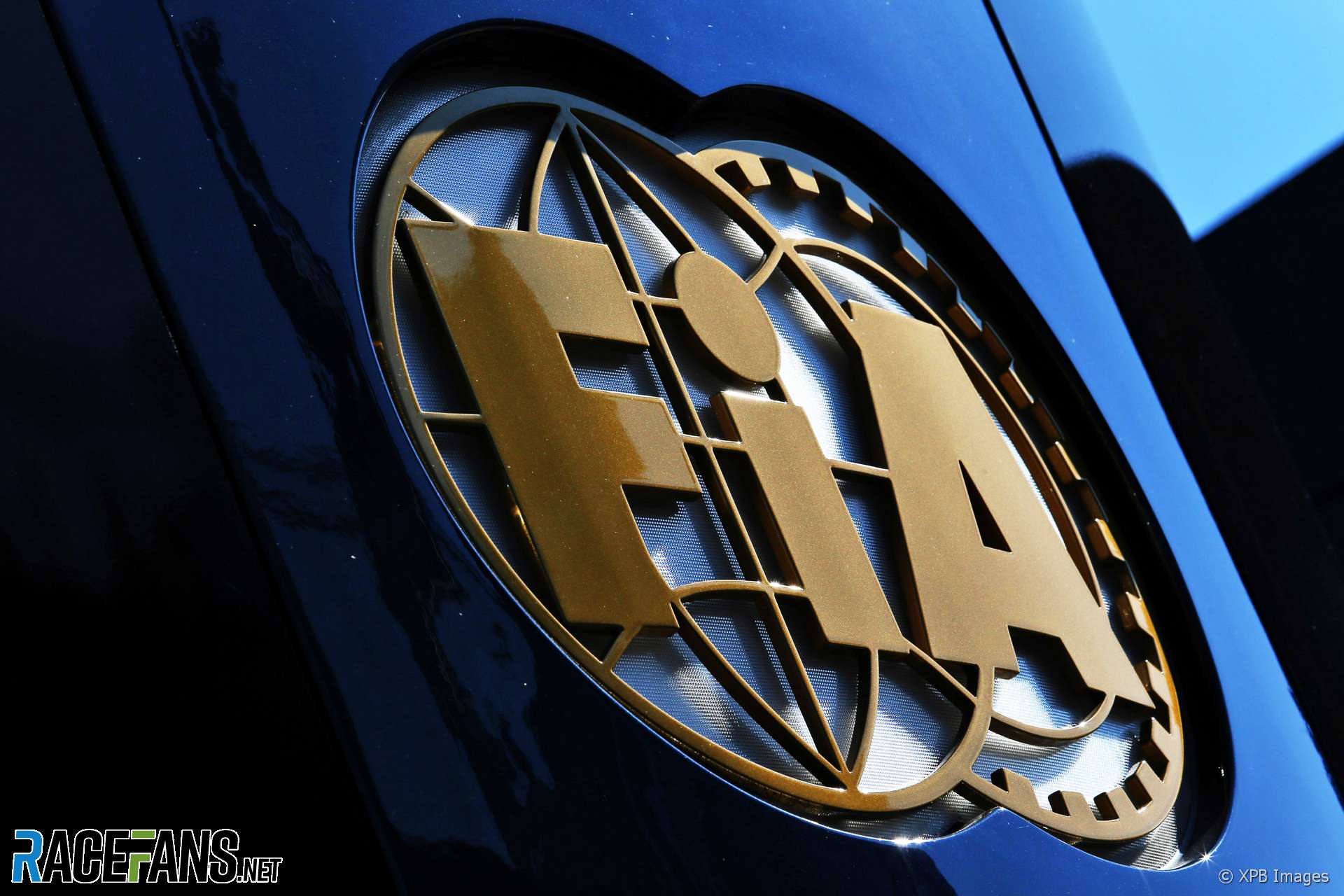
ColdFly (@)
6th November 2019, 12:34
Wouldn’t that be 16 for Simple Majority and 21 for Super Majority, @dieterrencken?
David BR (@david-br)
6th November 2019, 14:00
Seems set up to ensure FIA and Liberty have vetos, since they vote as a block of 10 votes presumably, and then the team vote is either simple majority (actually half the teams) or big majority (8 out of ten teams).
Matt Dickens (@tsmv)
6th November 2019, 14:28
This is correct; the structure is really set up to require for a majority:
FIA + Liberty + 50% of the teams
And for a super-majority:
FIA + Liberty + 80% of the teams
Phylyp (@phylyp)
6th November 2019, 14:36
@david-br – that is a good potential explanation.
Dieter Rencken (@dieterrencken)
6th November 2019, 12:45
That’s the terminology used as it requires a larger majority to change that late.
ColdFly (@)
6th November 2019, 13:20
Thanks @dieterrencken.
Thus more like an Enormous Majority and Gigantic Majority ;)
In effect, this means (and logically so) that any proposal needs full support by FIA & FOM(Liberty) and endorsed by at least 6 teams (normal majority) or 8 teams (super majority).
rsp123 (@rsp123)
6th November 2019, 13:59
Ferrari’s veto power needs to be challenged – by a court case if necessary. It is the very antithesis of sport. I’m surprised a billionaire owner hasn’t already triggered Ferrari into using its veto. Having said that, I doubt very much that Ferrari would want the adverse publicity a suit would bring. They would be revealed as the losers they are – because if Ferrari can’t win with the special advantages they enjoy, then they would surely be dead last without all the extra money and veto powers. Besides, now that Ferrari is a publicly traded stock, the board would not want to see this on the front pages.
Guybrush Threepwood (@guybrushthreepwood)
6th November 2019, 17:30
Nah, if that’s what it takes to keep Ferrari then it’s a pretty cheap incentive. Ferrari aren’t going to use it to benefit themselves only – imagine the public backlash and reputation damage to them and to FIAT.
No, the veto is a toothless tiger that people worry about too much.
Robbie (@robbie)
7th November 2019, 14:42
@guybrushthreepwood Agreed. I was more concerned about their veto power under BE (and Max Mosley) as I believe that the way it worked, especially in the MS/Ferrari era, was that rules were formed for Ferrari such that they didn’t really need to veto anything as just the threat of it’s presence saw them get their way. I believe that now under Liberty there has still been some negotiations that have soothed Ferrari’s ruffled feathers such that they have not needed to exercise their veto power, but this time it has all been to shape a new and better F1 for all teams. Eg. Binotto had expressed concern about not making F1 too spec by removing too much freedom from designers and engineers, and that would be a concern likely most fans and teams would share. So if they (the teams) found Liberty/Brawn were stuck on making F1 too spec, even after negotiations, Ferrari might have stepped in with their veto that would have benefited everyone (setting aside the argument of higher costs to play in F1 that goes with the more freedom they have).
I genuinely believe that even with all the weight Ferrari has they also believe they cannot strongarm their way through, and look like that is their only way to success, but I think they also get that F1 has not been on a sustainable path for quite some time now, and change is needed and welcome.
Sad F1 Fan
6th November 2019, 14:12
Losers? They are the only team that bothered to compete every single race for the last 70 years. They earned their position through long and hard work.
I rather have 3 teams like Ferrari in F1 than 20 teams like Renault or Williams. Teams that refuse to commit or compete when it isn’t 100% beneficial financially.
ColdFly (@)
6th November 2019, 14:27
I guess Ferrari hasn’t been in that situation yet :P
Sad F1 Fan
6th November 2019, 15:47
Well, given that Ferrari ran themselves into bankruptcy and then also emptied out Fiat’s pockets to race. :+
anon
6th November 2019, 19:10
Sad F1 Fan, as Keith points out, Ferrari did in fact skip multiple races, and there were multiple years where Ferrari would skip multiple races per season. Furthermore, what is also often forgotten is that, if Enzo Ferrari had had his way, Ferrari would have left the sport in the 1970s – his first love wasn’t Formula 1, it was sportscar racing, and there were times in the early 1970s where he sacrificed resources from the Formula 1 team to support the sportscar division instead. What kept Ferrari in F1 was the growing dominance of Porsche in sportscar racing and Forghieri lobbying Enzo to stick to F1.
It also seems very strange that you are complaining about Williams being a team “that refuse to commit or compete when it isn’t 100% beneficial financially”. Williams are the third oldest team on the entire grid and have over 740 Grand Prix to their name, whilst the founder, Frank Williams, battled back from bankruptcy and rebuilt his team in order to stay in the sport – Williams are most certainly not the sort of team that enters and leaves the sport on a whim.
I’d also question your assertion that “Ferrari ran themselves into bankruptcy and then also emptied out Fiat’s pockets to race”, as Ferrari were not bankrupt at the time they sold their stake to Fiat – it’s true that there was an increase in investment into Ferrari, but it’s been suggested that the deal was more about personal relations between the Angelli’s and Ferrari.
dsob (@dsob)
7th November 2019, 13:22
Hear, hear! Well said. Especially the paragraph on Williams.
And it’s true Ferrari have indeed missed many races. In fact, in 1950, first year of the World Championship races, Ferrari were absent from the grid at Silverstone. They didn’t enter the Championship until the second race, in Monaco.
Keith Collantine (@keithcollantine)
6th November 2019, 14:54
Pedant here! There’s no team which has competed in every race. Ferrari have entered every season, but not every race.
Yaru (@yaru)
6th November 2019, 15:40
Kinda easy to do when you get 70 million for just showing up.
Besides if you are right they aren’t doing it for financial benefit, then surely they would still race and try to win without the historic bonus? More balance yet more competition.
Ed
6th November 2019, 15:57
What i find funny here is yes Ferrari have a Veto, but when you look at that they went 21 years without winning any title (and its getting on for another long streak) the Veto they hold is barely used, but when it was used it was to the benefit of all engine suppliers to make sure that their financial interests were retained (IE – Engine suppliers got the money their product was worth not running at a loss) As mentioned in this article there is a fine line between ramming through a set of rules and regs that ride roughshod over the interests of the teams to a point were teams feel the need to quit and go elsewhere. The veto provides some protection to the teams as a measure to use to protect their interests. Anyone who pretends Ferrari is using the veto every season is deluded.
Gerrit
6th November 2019, 17:15
Sadly not a single mention on what the consumer wants from the F1 product. Ignore the end user (the one that spends the money — directly watching or indirectly on purchasing sponsors products) and you are guaranteed failure.
Now consumers normally don’t get a say on how any organisation is structured but every organisation better keep the cashflow generated, by satisfying the consumer, top of mind.
Not sure F1 is doing that right now.
John Toad (@)
6th November 2019, 17:47
First thing I thought when I saw the list of interested parties. Where are the fans mentioned in all this.
F1 could run without any fans, deserted stadiums, empty grandstands, no queues for merchandise, but why would anyone enter a team for that?
If the powers-that-be ignore the fans needs then the fans may well start ignoring F1.
Darryn Smith (@darryn)
6th November 2019, 22:25
Interesting perspective. I feel the opposite, but I believe that it just that they don’t know who their fans really are.
Robbie (@robbie)
7th November 2019, 14:58
Not quite sure what you are on about. This is an article about F1’s governance, and therefore F1’s internal workings, not about fan input.
The way I see it, all the work that Liberty and Brawn have been doing is not just to make F1 a better product, but to also make it sustainable. Everything they are working towards, and are obviously making great strides towards, will benefit the fans. F1 has known for years, both from the fans as well as from looking themselves in the mirror, what fans would prefer. They’ve been hearing from the fans loudly and clearly. Now they are addressing everything. All we fans need to do now is support the new chapter because I think it is going to be awesome.
hobo (@hobo)
6th November 2019, 17:19
I think I would prefer something like:
FIA: 4 votes
Liberty: 4
Teams: 1 each (10 total currently)
And then require something around 11 to 13 votes for what they call simple majority, and 14 to 16 votes for super majority. That way FIA/Liberty need at least some buy-in to make changes for the next season.
They still have the right to make changes unilaterally for 2+ seasons down the road, right? If so, then I think giving up some control for the immediately following and current season is okay.
@HoHum (@hohum)
6th November 2019, 19:47
Bernie may not have been formally educated in history and politics but he understands as well as anybody the old maxim “divide and conquer”, so far from being distracted by his court case he did what was necessary to quell (again) the team rebellion he was facing by paying off the key players ,which was the least costly option he had, the same strategy he used in the court case and with the tax authorities.
Jimmi Cynic (@jimmi-cynic)
6th November 2019, 19:57
“Fairer representation of all teams within the F1 Commission – all teams to hold full votes, rather than half the grid being members of the Strategy Group, which is currently the initial legislative body”
RBR, Merc and Ferrari with their satellite teams just skipped over that bit of ‘fairer representation’. Smooth.
Stephen Crowsen (@drycrust)
7th November 2019, 1:10
No, all teams get a vote. The fact that some teams are dependent upon others, thus making it politically wise for them to vote in line with the team that supplies them, is beside the point. Those more dependent teams still vote primarily for their own benefit.
PeterG
6th November 2019, 23:28
I just hope Liberty don’t start trying to push through more gimmicks such as reverse grids as them needing all teams to agree is the only thing that saved us from that as well as some of the gimmicky ideas Bernie tried to force upon everyone.